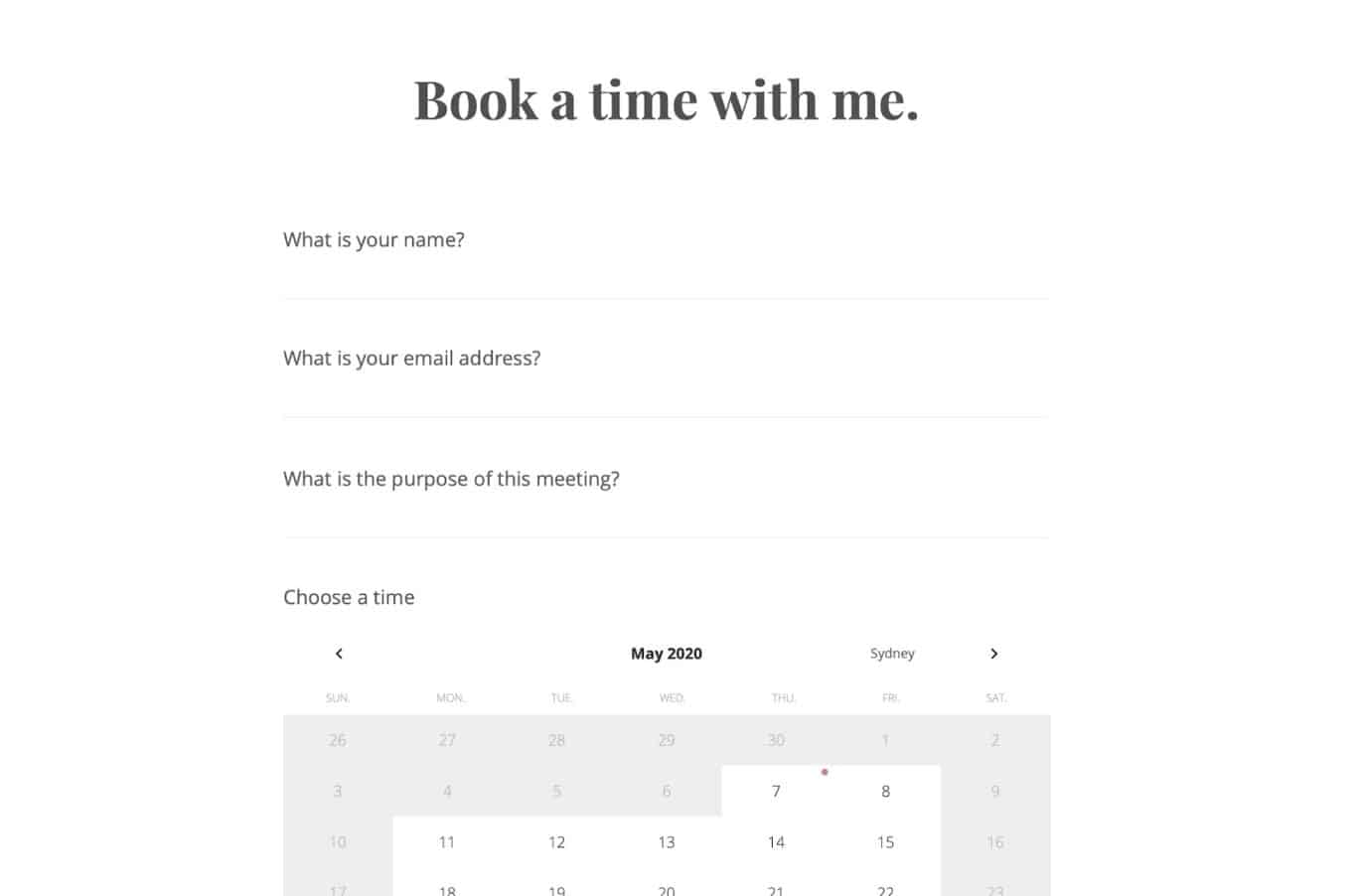Paperform on Collaborating Across Time Zones
Jodie Lee is a growth marketer and content writer at Paperform. She loves writing about product marketing, technology, and workplace productivity.
Collaboration is already a challenge, but when working within a remote team, a host of new problems can arise. With team members working from all around the world, some of the obstacles you might face include geographical location, time differences, and language barriers.
You will most likely face challenges in setting meetings, as well as communicating properly and in a timely manner. That’s why we’ve come up with common problems that may crop up when working across time zones, coupled with our top suggestions for managing them.
Miscommunication
One of the most frequent problems that will come up is miscommunication, particularly due to working hour differences.
For example, you might find that meetings take longer to coordinate as you have to translate the meeting time across time zones. There’s also the issue of having a small window of time in which everyone’s working hours overlap, leading some to miss meetings entirely.
To prevent this as much as possible, consider using video conferencing tools that can convert meeting times between time zones on your behalf. Google Hangouts and Microsoft Outlook can automatically and easily convert times so that you can plan better meeting times or avoid any time-related misunderstandings.
Another way to stay ahead of this issue is to note everyone’s availability or working hours in your preferred time zone before scheduling the meeting. This is easily done by using an online scheduling system or form to set up meeting times that work for everyone.
Below is an example of a form that can be distributed to team members, in which availability or preferred time slots can be allocated:

As a bonus, online scheduling software makes it easier for employees in your company to schedule one-on-one video meetings with you when they can’t walk into your office. Simply add a number of available hours from which each employee can select for the meeting.
Here is an example of a Doodle poll that achieves a similar result:

It’s important to try and have as much face-to-face communication as possible rather than just relying on messages or email. If you use the right online tools for your business, your scheduling efforts will go a long way. Employees will likely notice and respect your dedication to holding meetings even if they are slightly inconvenient.
Delays in Communication
Delays in communication can occur when working hours are radically different from one team member to the next. The less serious of these involve delays in responding to emails and messages, which can cause slow down processes that involve multiple people.
More serious issues are time-dependent messages not being received in time, and delays in responding to critical or urgent information.
In such situations, it is important to stay on top of time-sensitive issues. The solution can be as simple as organizing frequent meetings or holding daily stand-up meetings. This increases the chance that potential problems are detected ahead of time.
Another idea is to nominate a person from each key location that is able to meet on a regular basis with other designated representatives. If issues are external — like changes to local government regulation — then you will want someone to lead the others in responding to the issue.
By delegating responsibility and increasing the frequency of communication, you ensure that your team is equipped to deal with any sudden issues that come up without waiting for someone’s confirmation from halfway around the globe.
Greater Dependencies Between Team Members
Similar to the previous point, problems can arise when someone outside your time zone has an important document, note, email, file, or deliverable that you need to complete a job. This is especially the case when multiple people are working on the same task.
When each person withholds files until someone requests it, more dependencies are created in your team which increases time spent waiting for these files to be transferred. This can be easily solved with a centralized database.
While it’s not exactly a novel solution, many people still don’t share data and information across their business as effectively as they could. To avoid delays in processing and make sure every member of the team is on the same page, you’ll need to have a centralized depository for shared files and information.
This doesn’t have to be limited to Google Drive or its alternatives, but can also extend to team-wide communications. Slack, for example, can be the channel of communication for matters that concern the entire organization. Similar discussion and messaging tools can achieve faster relays of important data.
For many businesses, a significant need for additional protection when it comes to client and customer data can require more complex database systems. More sophisticated databases such as MySQL can be used if there’s a particularly large volume of data at hand; it’s merely a matter of exploring the market and seeing which option works best for your company.
Low Familiarity and Team Bonding
If there is one thing that will make a project come together, it’s teamwork. It may seem like a cliche, and you may have seen it on posters plastered over the walls of every office on Earth, but that’s because it’s true.
While teamwork can be easier in a single office, it can be tough to get your whole team to work as one, when they’re scattered around the world.
Real-life interactions often give people an indication of everyone’s work behaviors and personalities. Removing this from the equation means that the people you work with might be reduced to names and roles rather than people with unique skills and knowledge.
If you want to solve this, then at least once per year, you should be making an effort to bring the whole company together. Ideas for doing this include team-building exercises, office catch-ups, and game nights, whether this is conducted online or not.
Doing so will allow your team to all feel like they’re part of the same unit, and they’ll perform like one. Employees will have greater consideration and empathy for each other, and this collaboration of different perspectives and ways of thinking will lead to a more innovative and productive team.
Lack of Awareness
Empathy and awareness of each others’ experiences can go a long way to establishing trust and lasting work relationships. A lack of awareness of time zone differences can lead to fragmented teams.
For example, team members can often be ignorant of each other’s working hours and waste time waiting for others to respond to messages or emails, even when it is not at the other person’s convenience.
Working across multiple time zones means dealing with the political, environmental and social circumstances of different countries. Every person’s day will look different, and it’s important for everyone to be mindful of different work patterns.
At the very least, a quick, concrete fix for this is actively searching for someone’s current time zone before you send them a message that needs an immediate reply.
Whether you use Windows or Mac, Apple, or Android, there are calendar applications that can be used across all platforms that will enable you to see each person’s location and their current time. Not only are apps like this convenient, but they can also save you a lot of time and effort if you are used to constantly having to look up the time in another country.
Language barriers can often get in the way as well, although usually, everyone across the team will share a main language. However, if someone is struggling to understand complicated phrasing or jargon, it’s best to stick to clear language that doesn’t invite any follow-up questions.
We tend to prioritize our tasks above anyone else’s because they are our most immediate worry. This means that we can request files from others or message them with the unrealistic hope of an immediate reply, or use terminology that others may be less familiar with.
In such cases, team members should aim to realize each other’s unique situations and turn feelings of frustration into understanding and acceptance.
Key Takeaways
Remote teams suffer from the usual team-related problems and more. Though problems are situational and dependent upon specific team contexts, there are five common problems that employees face when working across time zones:
- Miscommunication — issues with differing work hours leading to less frequent or missed meetings
- Delays in communication — where time-critical emails and messages are received too late
- Greater dependencies between team members — caused by similar delays to above, except with files and key deliverables not shared across business units or roles
- Low familiarity and team bonding — the added distance leads to less time spent in each other’s presence, leading to a lack of familiarity of the team and who you’re working with
- Lack of awareness—general frustrations generated when people don’t meet your expectations for factors outside their control
Whether it’s by holding frequent video conferences, centralizing information, or just having a greater awareness of and consideration for each member’s situations, you can create an atmosphere that mimics real-life office settings. Your team will appreciate the solutions you’ve put in place for them and respond enthusiastically to a more collaborative work environment.


